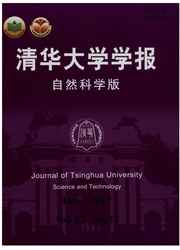

 中文摘要:
中文摘要:
干旱地区的水资源短缺使得膜下滴灌逐渐取代大水漫灌,在新疆及中国北方地区得到大面积推广应用。为研究灌溉方式转变后的土壤盐分动态及对作物生长和产量的影响,于2011年和2012年开展了棉田膜下滴灌和漫灌对比实验。基于6 900个土壤样本的水、盐结果及相关的作物观测数据,结果表明:膜下滴灌下,50cm土壤深度内盐分在出苗期和灌溉期升高约25%,呈现出累积趋势;而漫灌条件下,灌溉期盐分得到充分淋洗,降低明显;滴灌盐分的入渗深度约为50cm,而漫灌则达到150cm以上。作为对土壤水盐分布改变的响应,膜下滴灌根系更为发达,滴灌条件下棉花根系总量是漫灌条件下的1.6倍;膜下滴灌和漫灌的水分利用效率(WUE)分别是0.68kg/m3和0.22kg/m3。膜下滴灌实现了良好的经济和环境效益,但在长期应用条件下需注意防治淋洗水量不足引发的盐碱化风险。
 英文摘要:
英文摘要:
Mulched drip irrigation has gradually replaced flood irrigation and is now widely used in Xinjiang.This study explores the effects of the irrigation methods on the soil salt dynamics and the crop growth using experiments conducted from 2011 to 2012in a cotton field with mulched drip and flood irrigation systems.The6 900 samples was observed.The results show that the salinity increased during the growth period by 25% within the top 50 cm of the soil depth with mulched drip irrigation.With flood irrigation,the soil salinity markably decreased due to the large amount of irrigation water. The salt leaching depth was 50 cm for drip irrigation,but more than 150 cm for flood irrigation.The root density with drip irrigation was 1.6times that of flood irrigation.The water use efficiency was 0.68 kg/m3 with mulched drip irrigation and 0.22kg/m3 with flood irrigation.Thus,the mulched drip irrigation significantly enhances the water use efficiency;however,the salinization risk induced by the lack of leaching water must also be addressed.
 同期刊论文项目
同期刊论文项目
 同项目期刊论文
同项目期刊论文
 Ecohydrological evolution model on riparian vegetation in hyperarid regions and its validation in th
Ecohydrological evolution model on riparian vegetation in hyperarid regions and its validation in th Socio-hydrologic perspectives of the co-evolution of humans and water in the Tarim River basin,Weste
Socio-hydrologic perspectives of the co-evolution of humans and water in the Tarim River basin,Weste A comparison of methods for determining field evapotranspiration: photosynthesis system, sap flow, a
A comparison of methods for determining field evapotranspiration: photosynthesis system, sap flow, a Groundwater dynamics under water-saving irrigation and implications for sustainable water management
Groundwater dynamics under water-saving irrigation and implications for sustainable water management Exploring the spatial variability of contributions from climate variation and change in catchment pr
Exploring the spatial variability of contributions from climate variation and change in catchment pr A conceptual socio-hydrological model of the co-evolution of humans and water: case study of the Tar
A conceptual socio-hydrological model of the co-evolution of humans and water: case study of the Tar Simulation and evaluation of ecohydrological effect of water transfers at Alagan in lower Tarim Rive
Simulation and evaluation of ecohydrological effect of water transfers at Alagan in lower Tarim Rive A two-dimensional numerical model coupled with multiple hillslope hydrodynamic processes and its app
A two-dimensional numerical model coupled with multiple hillslope hydrodynamic processes and its app Inverse modeling of hydrologic parameters using surface ?ux and runoff observations in the Community
Inverse modeling of hydrologic parameters using surface ?ux and runoff observations in the Community Urbansignatures in thespatial clusteringof summer heavy rainfall events over the Beijing metropolita
Urbansignatures in thespatial clusteringof summer heavy rainfall events over the Beijing metropolita Impact of Urbanization on Heavy Convective Precipitation under Strong Large-Scale Forcing: A Case St
Impact of Urbanization on Heavy Convective Precipitation under Strong Large-Scale Forcing: A Case St 期刊信息
期刊信息
